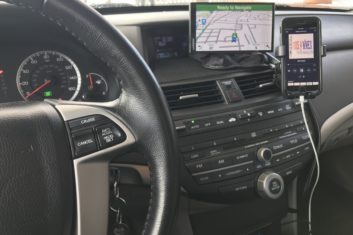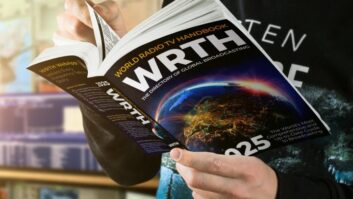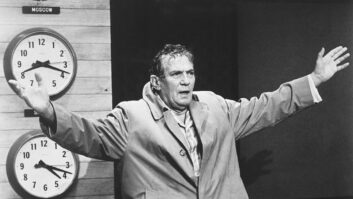
Twelve year ago, radio broadcast engineer Tom Ray, penned these words: “Unless we give Joe Consumer a reason to go out and purchase an HD Radio for his car – until he can obtain it easily and at a reasonable cost, and a device that works – I fear HD Radio is going to go the way of FM quad and AM stereo, relegated to the scrap pile of history.”
Tom Ray wrote his article for Radio World when he was the vice president/corporate director of engineering for Buckley Broadcasting/WOR Radio in New York City. He was a strong and vocal supporter of HD Radio and his WOR was one of the first AMs on the air with an HD Radio signal. So, any broadcaster that read Tom’s article, “HD Radio Shouldn’t Be This Hard,” should have taken it as a wake-up call about steps the radio industry needed to take to stay relevant in their listeners’ lives.
Buying a New Car in 2010
Tom is a loyal Ford customer, so when his Explorer went to the automobile graveyard with 230,000 miles on it, Tom wanted to get a new Ford Escape, equipped with HD Radio. The only problem was, Ford wasn’t putting HD Radios into their Escapes, instead, they were pushing Satellite Radio. (Tom noted that his wife listened only to Satellite Radio in her car, saying “in her opinion there is nothing worth listening to in New York’s Hudson Valley, 50 miles north of New York City.)
This should have been yet another radio industry wake-up call about its future.
I encourage you to click on the link and read what Tom Ray wrote a dozen years ago about how difficult it was to put an HD Radio into a new car which, at that time, didn’t offer OEM HD Radios and how he, as a broadcast engineer, was totally frustrated trying to install an aftermarket one.
Streaming Radio at Home
Since Christmas 2017, when my wife gave me my first Amazon Echo smart speaker, our Echo family has quickly grown to four of these devices. There is nowhere you can be in our home and not ask Alexa for something.
Since 2017, all of our in-home radio listening is via streaming.
While we also occasionally streamed radio in the car, on all of our road trips from 2018–2021, SiriusXM always seemed to be offering a 3-month free listening trial that I can honestly say we enjoyed the listening to. But, I’ve never been a subscriber, because other than road trips I spend very little time in the car.
Streaming Radio in the Car
In October, while enjoying my latest free 3-month trial for SiriusXM radio, I decided it was time to bring my in-house streaming radio habit into both of our cars. We own a 2006 Subaru Forester and a 2009 Honda Accord.
The Subaru doesn’t have an AUX input, the Honda does.
Streaming in the Subaru was accomplished with a Bluetooth receiver that will broadcast on any FM frequency (88.1 works best). In the Honda, this same device’s output was plugged into an AUX receptacle.
The result is, as soon as either my wife or myself enters one of our cars, the Nulaxy KM18 immediately pairs with our iPhones. I installed the AINOPE Car Phone Holder Mount to hold our phones, and keep them easily accessible to control whatever we would like to listen to.
Total cost for each car: $33.43. Time to install, virtually nil. I just plugged the Nulaxy KM18 into a power port and it was operational. The AINIOPE holder easily clamps to an air vent on the dashboard and holds any smartphone.
Unlike the nightmare that Tom Ray experienced back in 2010 trying to put HD Radio into his car, this installation by me, a non-engineer, was a piece of cake.
A Call to Action
I recently sat in on a Radio World webinar called “A Call to Action, radio’s existential battle for the dash.” Paul McLane, Managing Director of Content/Editor in Chief of Radio World at Radio World/Future U.S., hosted the webinar and did an excellent job. However, one particular piece of information shared during the presentation that I thought was crucial was, how Mercedes-Benz was equipping their vehicles’ radio screens with the following pre-sets: SiriusXM, FM, AM and TuneIn Radio.
TuneIn Radio is the App I use for most of my radio listening, but why was it chosen by Mercedes-Benz? Turns out the answer is, “TuneIn’s radio stations can be accessed worldwide in 197 countries on more than 200 different platforms and devices.” TuneIn says it “provides the displaced radio listener a connection to home with local, national, and international stations anywhere they go and on any device.”
In other words, why would any audio consumer need DAB, DAB+, Digital Radio Mondiale, HD Radio, AM or FM when they can receive any radio station in crystal clear audio via streaming?
With the exception of the proprietary content offered by SiriusXM, everything else is available via streaming at no charge.
Cellular Plan
Now it goes without saying, that streaming consumes data. Each cellphone service provider offers different plans and different price rates. My wife and I are on Verizon’s unlimited phone/text/data plan. We have no landline phone in our home and our iPhones are our lifeline to being connected with each other, our family, our community and the world.
I’ve found streaming radio in our cars provides us with audio quality that is pristine. There’s no buffering or dropout, and it’s been a more reliable signal than AM, FM or SiriusXM radio, especially when traveling through tunnels.
Streaming Apps
I thought you might be interested in knowing what streaming Apps I have on my iPhone, here’s the current list:
- TuneIn Pro
- Audacy
- Pandora
- Spotify
- Amazon Music
- NPR ONE
- YouTube
- Simple Radio
- StreamS
- Apple Podcasts
- AccuRadio
- 650AM WSM
- Stitcher
Why I Prefer Streaming My Radio
We live far enough away from Washington, D.C., that radio signals for WTOP or WETA experience lots of noise and dropout, depending atmospherics, sometimes making them totally unlistenable. However, their streams are always crystal clear.
This fall Sue and I escaped to Cape Cod for a week and when I get on the peninsula, I love turning on WFCC – Cape Cod’s Classical station – 107.5 FM. Now with streaming radio, I can dial up WFCC on my TuneIn radio App and listen when we’re back home in Virginia.
Full disclosure, I am the midday DJ on WMEX-FM in Rochester, N.H., But even if I weren’t on the station, WMEX-FM would be my No. 1 pre-set for streaming. Gary James, the station’s morning man and program director, puts together a music mix that I find absolutely fabulous. It’s the music of my life.
Which brings me to another important point, radio today is global. No longer is your radio station competing just with other local stations, but radio that is streaming from anywhere on planet Earth.
Streaming also makes it possible for ON DEMAND spoken-word radio, also known as podcasts, to be easily available in the car.
Simington on Streaming
FCC commissioner Nathan Simington recently addressed Ohio broadcasters saying, “content delivery power had shifted away from broadcasters – stations and networks – and toward ‘online platforms,’ something he thinks the FCC needs to recognize in its quadrennial review of media ownership regs.”
He warned that: “Online media platforms are growing rapidly and threaten dominance over traditional media platforms; and Broadcast advertising revenue has flatlined, having been siphoned off from higher margin online platforms.”
The Future is Streaming
88% of the world’s population now uses mobile broadband as its main source of internet access, and nearly 90% of homes in the United States now have internet streaming. 2021 saw an estimated 22% ad industry growth rate, which Magna Global said was “the highest growth rate ever recorded” by this agency, beating a 12.5% growth rate recorded in the year 2000. The caveat however is, digital dominated traditional advertising raking in 64.4% of the growth in ad spending.
RAIN reports “The U.S. recorded music industry will exceed a 48-year revenue record set in 1999 (based on current estimates),” all coming from revenues paid by streaming music services.
The Harvard Business Review recently published “4 Principles to Guide Your Digital Transformation,” by Greg Satell, Andrea Kates and Todd McLees. In it, the authors wrote, “digital transformation is not just about technology. We’re desperately in need of a shift in focus. Leaders must inspire and empower their entire organization to boldly reimagine their work environment, customer needs, product offering, and even the purpose of the enterprise.”
Tom Ray was the proverbial “canary in the coal shaft” back in 2010, with few paying attention. Sadly, based on the early news coming out of the 2022 CES in Las Vegas, nothing has changed.
We’re living in a communications revolution,
bringing about changes that will be both
permanent and irreversible.
Revolutions never maintain or preserve the status quo.
This article originally appeared on Dick’s blog, DickTaylorBlog, where you can find more of his musings.
Comment on this or any article. Email [email protected].







